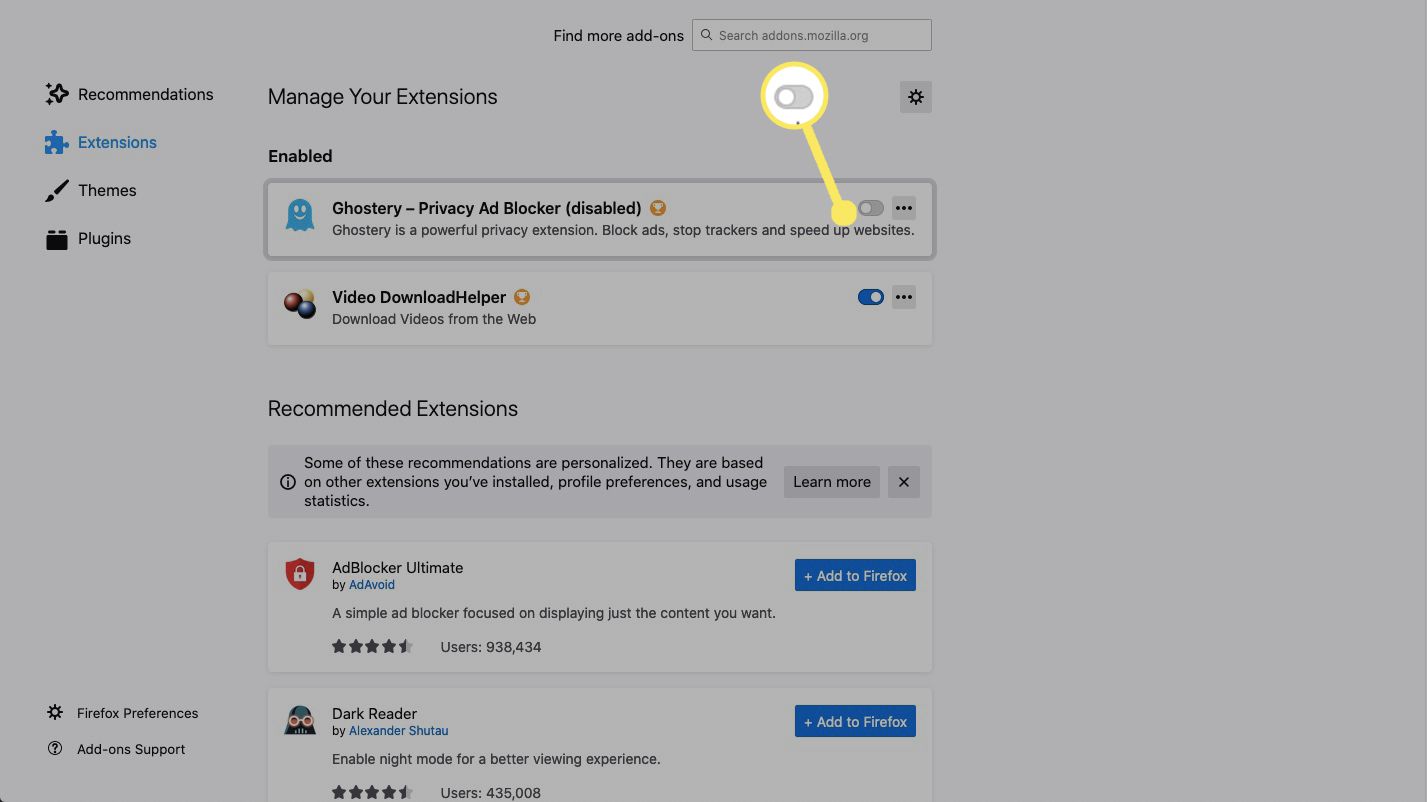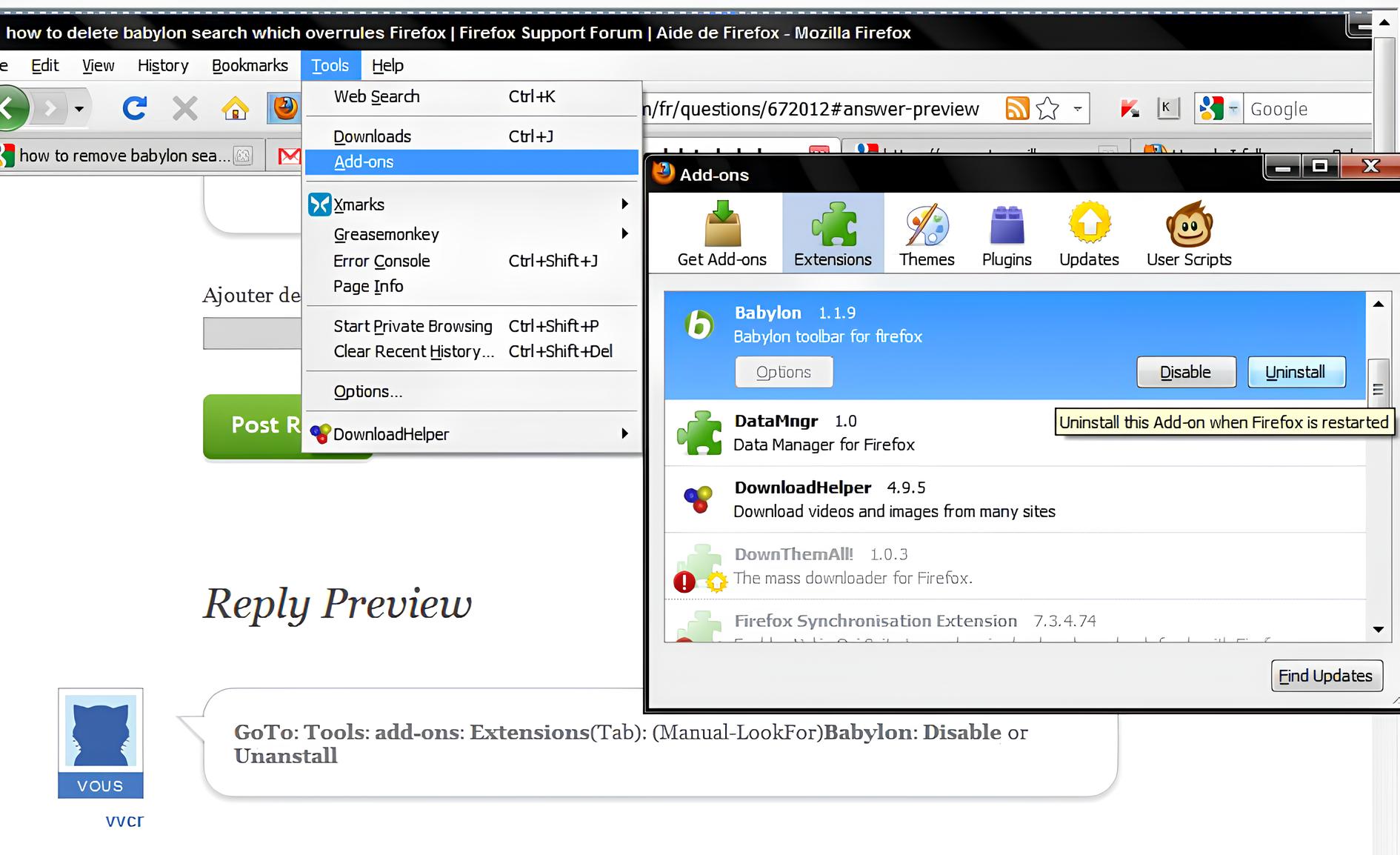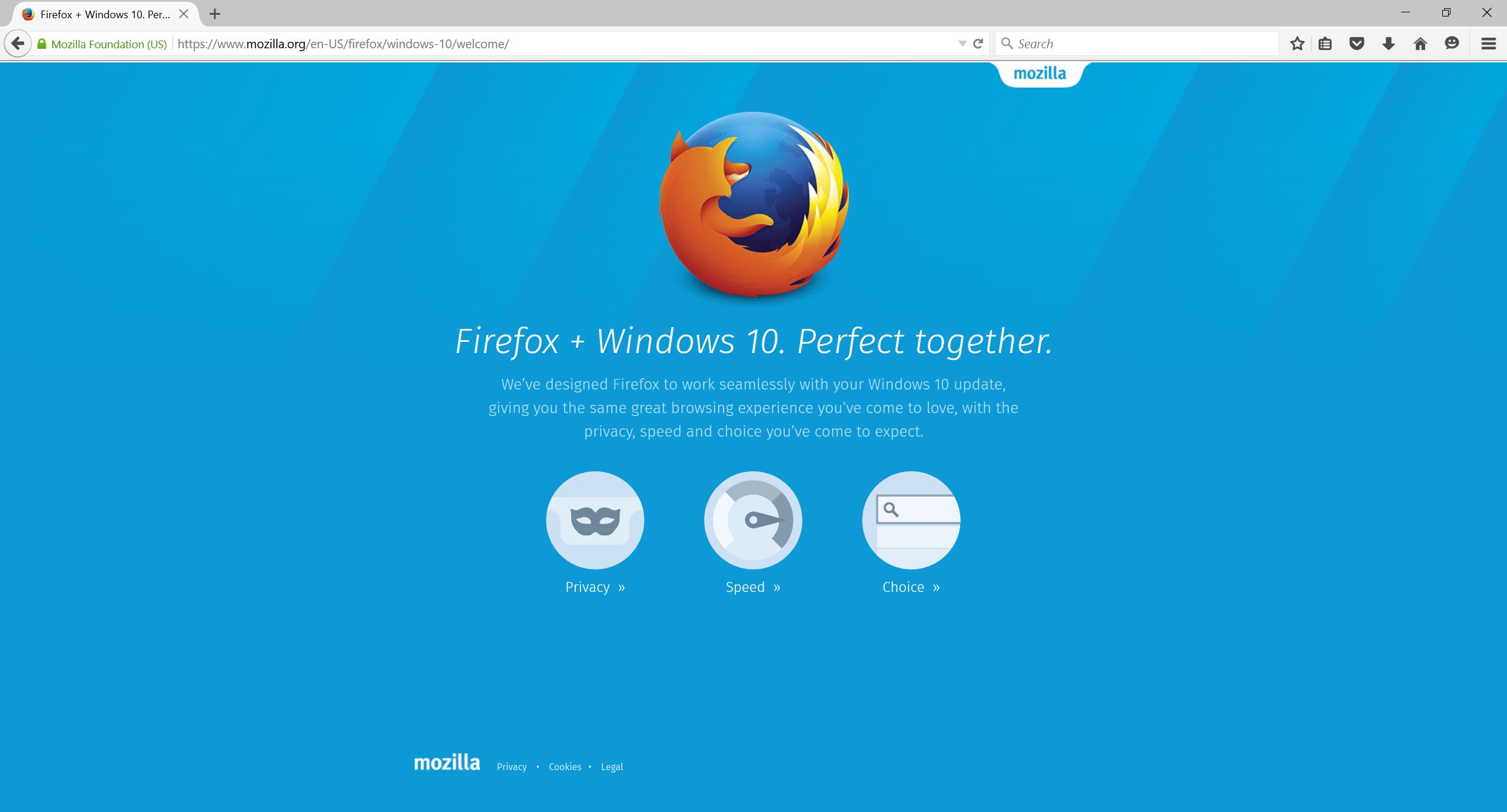Introduction
Removing browser extensions can be a necessary task for various reasons, whether you're streamlining your browsing experience, troubleshooting issues, or simply looking to switch to a different tool. If you've decided to bid farewell to Ghostery from your Firefox browser, you're in the right place. Ghostery is a popular browser extension that provides privacy and ad-blocking features, but if it no longer aligns with your browsing needs, it's time to part ways.
In this guide, we'll walk you through the step-by-step process of removing Ghostery from your Firefox browser. Whether you're a tech-savvy individual or a casual internet user, this guide is designed to be straightforward and easy to follow. By the end of this tutorial, you'll have a clear understanding of how to effectively remove Ghostery and manage your Firefox extensions with confidence.
So, if you're ready to regain control of your Firefox browsing experience, let's dive into the simple yet essential steps to bid adieu to Ghostery.
Step 1: Open Firefox
To begin the process of removing Ghostery from your Firefox browser, the first step is to open the Firefox application on your computer. Whether you're using a Windows PC, Mac, or Linux system, launching Firefox is typically a straightforward task. You can find the Firefox icon on your desktop, taskbar, or in the applications folder of your operating system.
Once you've located the Firefox icon, simply double-click on it to open the browser. Alternatively, you can use the search function on your computer to quickly find and launch the Firefox application. Upon opening Firefox, you'll be greeted by the familiar interface, complete with the address bar, tabs, and menu options.
If you're using a mobile device such as a smartphone or tablet, the process of opening Firefox is equally simple. Navigate to your device's home screen or app drawer, locate the Firefox app icon, and tap on it to launch the browser. With Firefox now open and ready for action, you're one step closer to removing Ghostery from your browsing environment.
Opening Firefox is the foundational step that sets the stage for the subsequent actions required to manage your browser extensions effectively. Whether you're a seasoned Firefox user or someone who's relatively new to the platform, accessing the browser is the essential starting point for any task, including the removal of browser extensions like Ghostery.
Now that you've successfully opened Firefox, you're prepared to proceed to the next step in the process of removing Ghostery from your browser. With the browser interface before you, it's time to navigate to the appropriate settings and menus that will enable you to manage your Firefox extensions with ease. By following the subsequent steps in this guide, you'll soon bid farewell to Ghostery and gain a deeper understanding of managing browser extensions within the Firefox ecosystem.
Step 2: Click on the Menu Button
In the quest to remove Ghostery from your Firefox browser, the next crucial step involves accessing the Menu button within the browser interface. The Menu button, represented by three horizontal lines stacked on top of each other, is a central hub for various browser settings, options, and functionalities. By clicking on this button, you'll gain access to a range of tools that empower you to customize your browsing experience, manage extensions, and navigate through Firefox's features effortlessly.
Locating the Menu button is a fundamental aspect of interacting with the Firefox browser. Positioned in the upper-right corner of the browser window, the Menu button is easily identifiable and serves as a gateway to a plethora of essential functions. Whether you're a seasoned Firefox user or someone who's recently transitioned to this browser, the Menu button is a pivotal element that facilitates seamless navigation and control over your browsing environment.
To access the Menu button, simply direct your attention to the upper-right corner of the Firefox interface. Once you've located the three horizontal lines arranged vertically, click on the Menu button to reveal a dropdown menu containing a wealth of options. This action triggers the expansion of the menu, unveiling a range of categories such as Preferences, Add-ons, Help, and more.
Upon clicking the Menu button, you'll notice that the dropdown menu presents a user-friendly layout, with clear and concise labels for each category. This intuitive design ensures that users can swiftly identify and access the desired settings and features within the Firefox browser. Whether you're seeking to manage extensions, customize browser preferences, or explore additional functionalities, the Menu button serves as a gateway to these essential capabilities.
As you click on the Menu button and witness the dropdown menu gracefully unfurl, you're presented with a visual representation of Firefox's versatility and user-centric design. This pivotal moment marks the transition from mere browsing to active engagement with the browser's inner workings. By embracing the Menu button as a pivotal tool in your browsing journey, you're poised to delve deeper into the process of removing Ghostery and gaining a deeper understanding of Firefox's capabilities.
With the Menu button now at your disposal, you're primed to embark on the subsequent steps that will empower you to effectively manage your Firefox extensions and bid farewell to Ghostery. As you navigate through the dropdown menu and explore the array of options before you, you're on the cusp of unlocking the full potential of your Firefox browsing experience.
Step 3: Select Add-ons
After clicking on the Menu button and unveiling the dropdown menu, the next pivotal step in the process of removing Ghostery from your Firefox browser involves selecting the "Add-ons" option. This crucial action propels you into the realm of managing browser extensions, where you can gain insight into the diverse array of tools that enhance your browsing experience.
Upon clicking on the Menu button, you'll notice the "Add-ons" option nestled within the dropdown menu. Represented by a puzzle piece icon and labeled with clear, concise text, this option serves as the gateway to your Firefox extensions, themes, and plugins. By selecting "Add-ons," you're embarking on a journey of exploration and customization, delving into the heart of your browser's capabilities.
As you hover your cursor over the "Add-ons" option and click on it, you'll be seamlessly transitioned to the Add-ons Manager within Firefox. This dedicated space is designed to provide you with a comprehensive overview of your installed extensions, enabling you to manage, customize, and remove them with ease. The Add-ons Manager serves as a central hub for optimizing your browsing environment, empowering you to tailor Firefox to your specific needs and preferences.
Upon entering the Add-ons Manager, you'll be greeted by a visually intuitive interface that showcases your active extensions, themes, and plugins. The layout is designed to offer clarity and accessibility, ensuring that you can swiftly navigate through your installed tools and make informed decisions about their presence in your browser. Whether you're an avid user of browser extensions or someone who's exploring this realm for the first time, the Add-ons Manager is engineered to provide a seamless and empowering experience.
As you immerse yourself in the Add-ons Manager, you'll gain valuable insights into the impact of each extension on your browsing experience. From privacy tools and ad blockers to productivity enhancers and visual customizations, your collection of extensions reflects your unique browsing habits and preferences. By selecting the "Add-ons" option and entering this realm of customization, you're granted the opportunity to curate your browsing environment with precision and purpose.
With the Add-ons Manager before you, you're now poised to navigate through your installed extensions and locate Ghostery within the array of tools. This pivotal moment marks the transition from mere exploration to active management, as you prepare to bid farewell to Ghostery and refine your Firefox browsing experience. By selecting "Add-ons" and immersing yourself in the Add-ons Manager, you're embracing the power to shape your digital journey and optimize your interaction with the web.
As you proceed to the subsequent steps in this guide, armed with the insights gained from the Add-ons Manager, you're on the brink of effectively removing Ghostery from your Firefox browser. The journey of managing browser extensions is a testament to your agency and control within the digital realm, and the Add-ons Manager stands as a testament to Firefox's commitment to user empowerment and customization.
Step 4: Find Ghostery in the Add-ons Manager
Upon entering the Add-ons Manager within Firefox, you're presented with a comprehensive overview of your installed extensions, themes, and plugins. This dedicated space is designed to provide you with a clear and accessible interface, allowing you to manage, customize, and remove your browser extensions with ease.
As you navigate through the Add-ons Manager, you'll notice a list of your active extensions, each accompanied by relevant details such as their names, icons, and functionalities. This visual representation offers a snapshot of the diverse tools that contribute to your browsing experience, reflecting your unique preferences and digital habits.
To locate Ghostery within the Add-ons Manager, you can leverage the search functionality provided within this interface. Positioned prominently at the top-right corner of the Add-ons Manager, the search bar empowers you to swiftly pinpoint specific extensions amidst your collection. By entering "Ghostery" into the search bar and initiating the search, the Add-ons Manager will dynamically filter your extensions, highlighting the presence of Ghostery within the results.
Alternatively, you can manually scroll through the list of installed extensions, visually scanning for the Ghostery icon and name. As you peruse the array of tools within the Add-ons Manager, Ghostery's distinct icon and label serve as visual cues, enabling you to identify its presence amidst your collection of extensions.
Upon locating Ghostery within the Add-ons Manager, you're presented with the option to manage its settings, disable its functionality, or proceed with its removal. This pivotal moment marks the transition from mere identification to active decision-making, as you prepare to bid farewell to Ghostery and refine your Firefox browsing experience.
By finding Ghostery within the Add-ons Manager, you're gaining valuable insights into the impact of this extension on your browsing habits. Whether Ghostery has served as a steadfast guardian of your privacy or an ad-blocking ally, its presence within your collection of extensions reflects a chapter in your digital journey. As you prepare to remove Ghostery, you're embracing the power to curate your browsing environment with precision and purpose, shaping your interaction with the web according to your evolving needs and preferences.
With Ghostery now located within the Add-ons Manager, you're poised to proceed to the final steps of removing this extension from your Firefox browser. The journey of managing browser extensions is a testament to your agency and control within the digital realm, and the Add-ons Manager stands as a testament to Firefox's commitment to user empowerment and customization.
Step 5: Click Remove
Having located Ghostery within the Add-ons Manager, the final decisive step in the process of removing this extension from your Firefox browser involves clicking the "Remove" button associated with Ghostery. This pivotal action marks the culmination of your journey to bid farewell to Ghostery and refine your browsing environment according to your evolving needs and preferences.
As you hover your cursor over the Ghostery entry within the Add-ons Manager, you'll notice the presence of the "Remove" button positioned adjacent to this extension. Represented by a clear and concise label, the "Remove" button serves as the gateway to parting ways with Ghostery, enabling you to seamlessly initiate the removal process with a simple click.
Upon clicking the "Remove" button, Firefox will prompt you to confirm your decision to uninstall Ghostery. This confirmation dialog serves as a safeguard against accidental removals, ensuring that you have the opportunity to reaffirm your intent before proceeding with the removal process. By confirming your decision, you signal your readiness to bid adieu to Ghostery and embrace a browsing environment tailored to your current preferences.
As the removal process unfolds, Firefox swiftly executes the necessary actions to uninstall Ghostery from your browser. This seamless transition reflects Firefox's commitment to providing a user-centric and intuitive experience, ensuring that the management of browser extensions is a straightforward and empowering endeavor.
With Ghostery successfully removed from your Firefox browser, you've taken a definitive step towards refining your browsing experience. Whether you're streamlining your collection of extensions, troubleshooting issues, or exploring alternative tools, the removal of Ghostery reflects your agency and control within the digital realm.
As you navigate through the aftermath of Ghostery's removal, you may notice a subtle shift in your browsing environment. Whether it's the absence of Ghostery's privacy features or the newfound freedom from ad-blocking functionalities, your browsing experience is poised to evolve in alignment with your current needs and preferences.
By clicking "Remove" and bidding farewell to Ghostery, you've demonstrated your ability to actively curate your digital journey, shaping your interaction with the web according to your unique preferences and evolving requirements. This pivotal moment marks the culmination of your journey to remove Ghostery from your Firefox browser, empowering you to navigate the digital landscape with confidence and purpose.
Conclusion
In conclusion, the process of removing Ghostery from your Firefox browser represents a pivotal moment in your digital journey, reflecting your agency and control within the realm of browser extensions. By embarking on this journey, you've demonstrated a proactive approach to refining your browsing environment according to your evolving needs and preferences.
As you navigated through the essential steps outlined in this guide, from opening Firefox to clicking the "Remove" button within the Add-ons Manager, you've gained valuable insights into the intricacies of managing browser extensions. Each action you took, from accessing the Menu button to locating Ghostery within the Add-ons Manager, served as a testament to your ability to engage with the inner workings of your browser and shape your digital experience.
The removal of Ghostery signifies a shift in your browsing environment, whether it's the absence of privacy features or the newfound freedom from ad-blocking functionalities. This transition reflects your adaptability and willingness to tailor your browsing experience to align with your current preferences and requirements.
As you bid farewell to Ghostery, you've not only streamlined your collection of extensions but also reaffirmed your role as an active participant in your digital journey. The Add-ons Manager, with its intuitive interface and comprehensive overview of installed extensions, stands as a testament to Firefox's commitment to user empowerment and customization.
Moving forward, the absence of Ghostery within your Firefox browser paves the way for new possibilities and discoveries. Whether you choose to explore alternative extensions, embrace different privacy tools, or simply revel in the unobtrusive browsing experience, the removal of Ghostery marks a significant milestone in your ongoing interaction with the web.
In essence, the journey to remove Ghostery from your Firefox browser is a reflection of your ability to curate and customize your digital environment. By embracing the process of managing browser extensions, you've reaffirmed your agency and control within the digital realm, setting the stage for a browsing experience tailored to your unique preferences and evolving needs.
























